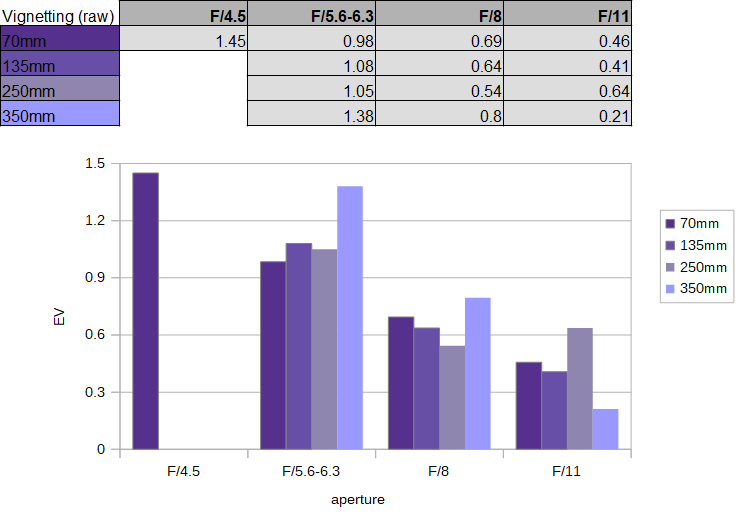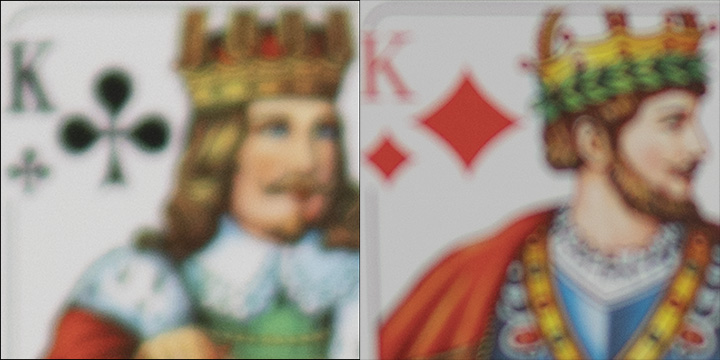Introduction
Sony has been pushing full-format E-mount lenses during recent years whereas dedicated APS-C lenses have been neglected. However, there have been two interesting releases in late 2019 at least – the E 16-55mm f/2.8 G and the E 70-350mm f/4.5-6.3 G OSS. In this review, we’ll have a look at the latter. You may argue that the Sony E 70-350mm f/4.5-6.3 G OSS is a bit of an odd addition to the lens lineup. After all, APS-C users can also mount the Sony FE 70-300mm f/4.5-5.6 G OSS or even the FE 100-400mm f/4.5-5.6 GM OSS. However, if you don’t plan to upgrade to a full-format camera any time soon, there’s not really a reason to do so in the first place – if the performance is comparable at least. Additionally, the E 70-350mm f/4.5-6.3 G OSS is also more affordable at just south of $1000 or 900EUR as well as more compact and light-weight. The max. focal length is equivalent to a whopping “525mm” on full format cameras – that’s quite a bit and sufficient for sports, your next safari, and even bird photography.
The E 70-350mm f/4.5-6.3 G OSS is a G-class lens thus targeting enthusiasts and semi-professional users. The build quality is accordingly high thanks to a combination of tough plastics on a metal mount. It also based on a dust- and moisture-resistant design which is, of course, a good idea because you tend to use such lenses outdoors only. Typical for its class, it uses an extending zoom mechanism. Our sample didn’t exhibit any wobbling even at 350mm. While we haven’t experienced any zoom creeping, it is possible to lock the zoom mechanism for transport. A dedicated focus-hold button is also provided. A barrel-shaped lens hood is part of the package.

The lens uses Sony’s XD linear motor for auto-focusing. Depending on the camera, the AF speed is decent although not racer and it’s, of course, noiseless. As usual manual focusing works “by wire” thus you drive the AF motor by turning the focus ring. The focus action is very precise – more so than mechanically coupled manual focusing.
As the lens name implies, an optical image stabilizer (OSS) is provided. Sony doesn’t provide any efficiency ratings. In real-life use, we’d rate it somewhere between 3 to 4 f-stops.
| Specifications | |
|---|---|
| Equiv. focal length (full-format) | “100-525mm” (in terms of field-of-view) |
| Equiv. aperture (full-format) | “f/7-9.8” (in terms of depth-of-field) |
| Optical construction | 19 elements in 13 groups inc. 1x aspherical, 3x ED elements |
| Number of aperture blades | 7 (rounded) |
| min. focus distance | 1.1-1.5 m (max magnification 1:4.3) |
| Dimensions | 77x142mm |
| Weight | 625g |
| Filter size | 67mm |
| Hood | petal-shaped (bayonet mount, supplied) |
| Other features | zoom lock switch, focus hold button, Dust and moisture resistant |
Distortion
The Sony E 70-350mm f/4.5-6.3 G OSS has two souls concerning image distortions.
The raw optical characteristic is hardly impressive … in the positive sense at least. RAW images exhibit massive pincushion distortions throughout most of the range with a peak of 3.8% at 135mm. If you are shooting wildlife, this may not matter but for images with straight lines, you should better stick to image auto-correction.




With activated image auto-correction, the distortions are perfectly corrected as you can see below.




Vignetting
The Sony lens is a dedicated APS-C design. Due to the smaller image circle, it produces more vignetting compared to full format lenses when on an APS-C camera.
At maximum aperture, the original light falloff is around ~1.4EV at the extreme ends of the zoom range – this will be visible in some scenes. Stopping down to f/8 helps to reduce this to a more manageable degree.

However, activated image auto-correction comes to the rescue once again here, and usually, you won’t notice any significant light-falloff at any setting. Remember that vignetting correction comes at the expense of higher corner noise due to the required signal amplification.

MTF (resolution)
As far as resolution is concerned, the Sony E 70-350mm f/4.5-6.3 G OSS delivers good to very good quality. Unsurprisingly, the performance is best in the lower portion of the zoom range. The image center is very good to excellent here and the border/corners are also very sharp at the relevant aperture settings. There’s a slight drop in quality at the 250mm setting but it’s still very sharp overall. The situation changes somewhat at 350mm. The quality in the image center is reduced albeit still decent whereas the outer image field softens. It’s best to stop down to f/8 for squeezing out the best quality here.
The field curvature is generally low. The centering quality of the tested sample was good.
Please note that the MTF results are not directly comparable across the different systems!
Below is a simplified summary of the formal findings. The chart shows line widths per picture height (LW/PH) which can be taken as a measure for sharpness. If you want to know more about the MTF50 figures you may check out the corresponding Imatest Explanations

Chromatic Aberrations (CAs)
Lateral CAs (color shadows at the image borders) are very low between 70mm and 250mm. They can be visible at 350mm with an average pixel width around 1px at the image borders but that’s still pretty good in the grand scheme of things. Image auto-correction will deal with this and it’s mostly a lossless correction here.

Bokeh
Given its moderate max. aperture, the Sony lens is not a bokeh monster. However, the focal length range is certainly long enough for isolating objects with a decent amount of surrounding blur so let’s see what it can do for you here.
Out-of-focus highlights show a rather busy inner zone and there’s also some outlining. This is less than ideal, of course. Furthermore, the shape of the discs starts to reflect the more edgy aperture shape at f/8 but it’s not too obvious – unlike at f/11. Unfortunately, it shows that the aperture mechanism consists of 7 blades only. That being said, if you are up to bokeh-style images, you will probably shoot at maximum aperture with this lens anyway.

The shape of the highlights tends to deteriorate towards the image borders – this is due to mechanical vignetting. As you can see below (images were taken at ~135mm), the discs have a “cat-eye” shape at f/5.6. Stopping down changes the shape and the corner discs are restored to a rounder shape at f/11.



The general rendition in the focus transition zones is very smooth in the background (to the left below). However, it shows very pronounced double-edges (nisen bokeh) in the foreground resulting in a quite nervous rendering.

Sample Images
Competition
As already mentioned in the introduction, there are a couple of alternatives to the Sony E 70-350mm f/4.5-6.3 G OSS (shown to the left below). There are its in-house cousins – Sony FE 70-300mm f/4.5-5.6 G OSS (center left) and the FE 100-400mm f/4.5-5.6 GM OSS (right) – as well as the brand new Sigma 100-400mm f/5-6.3 DN DG OS (center right). Sony cameras are already very small but this is especially true for their APS-C versions. Just in terms of balance, the E 70-350mm f/4.5-6.3 G OSS is more enjoyable to use. Performance-wise, it’s roughly comparable to the Sony FE 70-300mm f/4.5-5.6 G OSS while offering a little extra in terms of reach. It also has a slightly faster AF. The FE 100-400mm f/4.5-5.6 GM OSS is surely better still but it comes with an outlandish price-tag that will be a showstopper for most users. The new Sigma lens is within the same price realm and it seems to be impressively sharp but may suffer from an inferior image stabilizer (yet to be tested).

Image courtesy of camerasize.com
Generally, we were quite pleased with the Sony E 70-350mm f/4.5-6.3 G OSS although it's also clear that Sony had to accept some compromises in order to achieve the compact dimensions. The sharpness is very high between 70mm and 250mm but there is a more pronounced drop in quality at 350mm. It's not bad at all but you will see a difference there. The amount of pincushion distortions is a bit over the top in RAW files and there's also significant vignetting (for an APS-C lens) at maximum aperture. Thus it's a good idea to leave image auto-correction activated to handle this issue - and it does so flawlessly. As far as the quality of the bokeh is concerned - out of focus highlights are a bit on the rough side although it's fair to say that this is rather typical for long tele zoom lenses. It's still one of those areas where prime lenses outshine zoom lenses by quite a margin. However, the general bokeh is pretty smooth in the image background at least.
The build quality is on a high level and comparable to other G-class lenses that we tested so far. It feels sturdy thanks to high quality materials and smooth control rings. It also features a dust and moisture resistant design. The AF speed is good for such a lens. The image stabilizer comes handy because most of today's APS-C Sony cameras do not offer a built-in stabilizer yet. Based on what we have seen, it can give you a gain equivalent to 3-4 f-stops.
Overall, the Sony E 70-350mm f/4.5-6.3 G OSS is a interesting option for those who prefer to keep the overall size & weight of their setup down to a minimum - after all this was one of the core ideas of the mirrorless paradigm. The price tag may be a bit steep but it's not too far off considering the optical and mechanical qualities.
-
Optical Quality
-
Build Quality
-
Price / Performance


